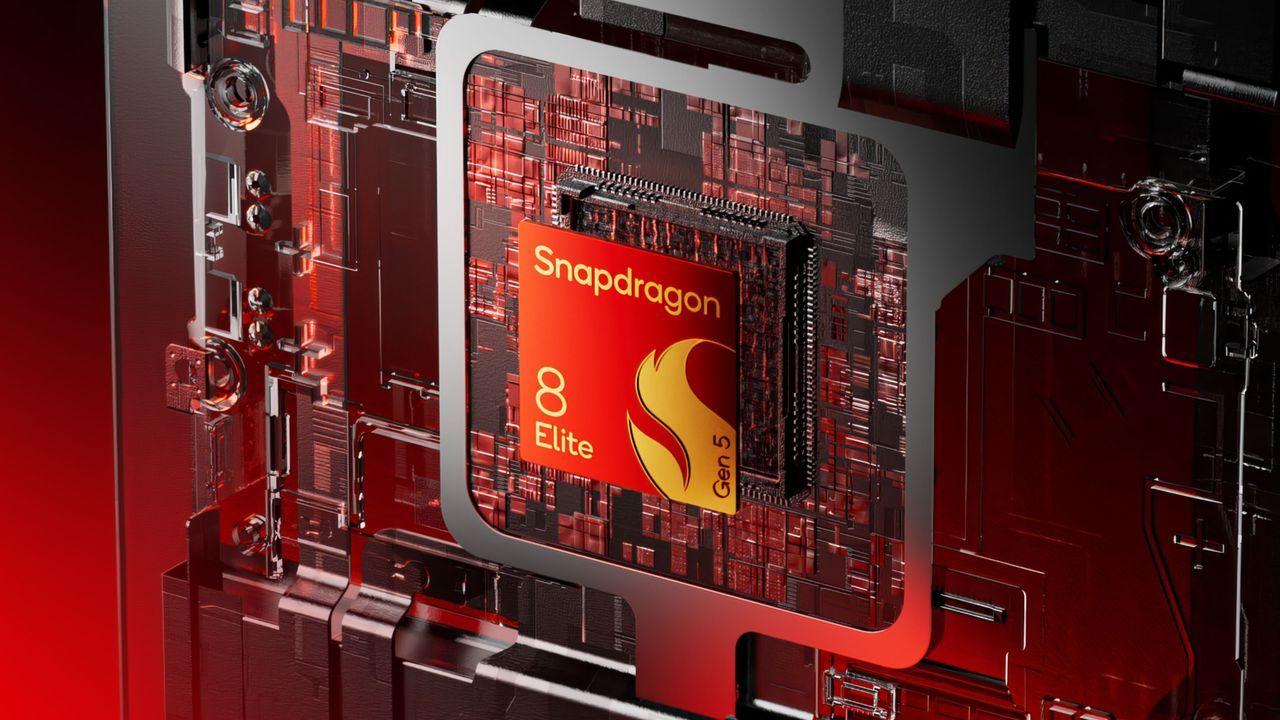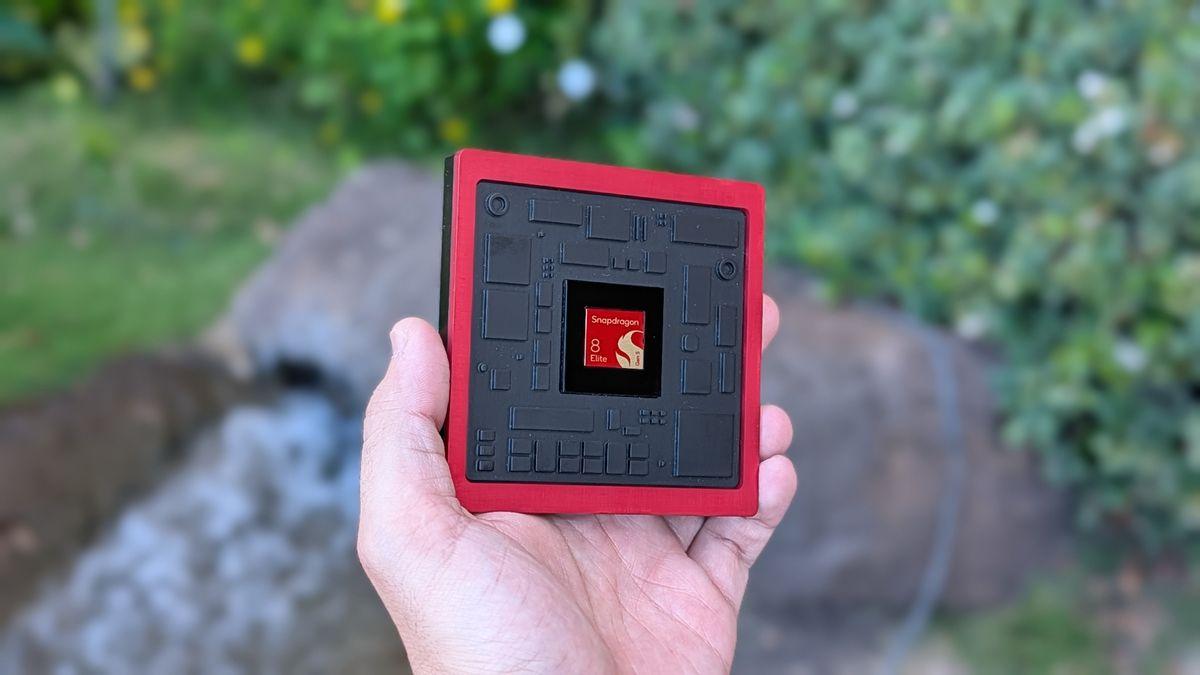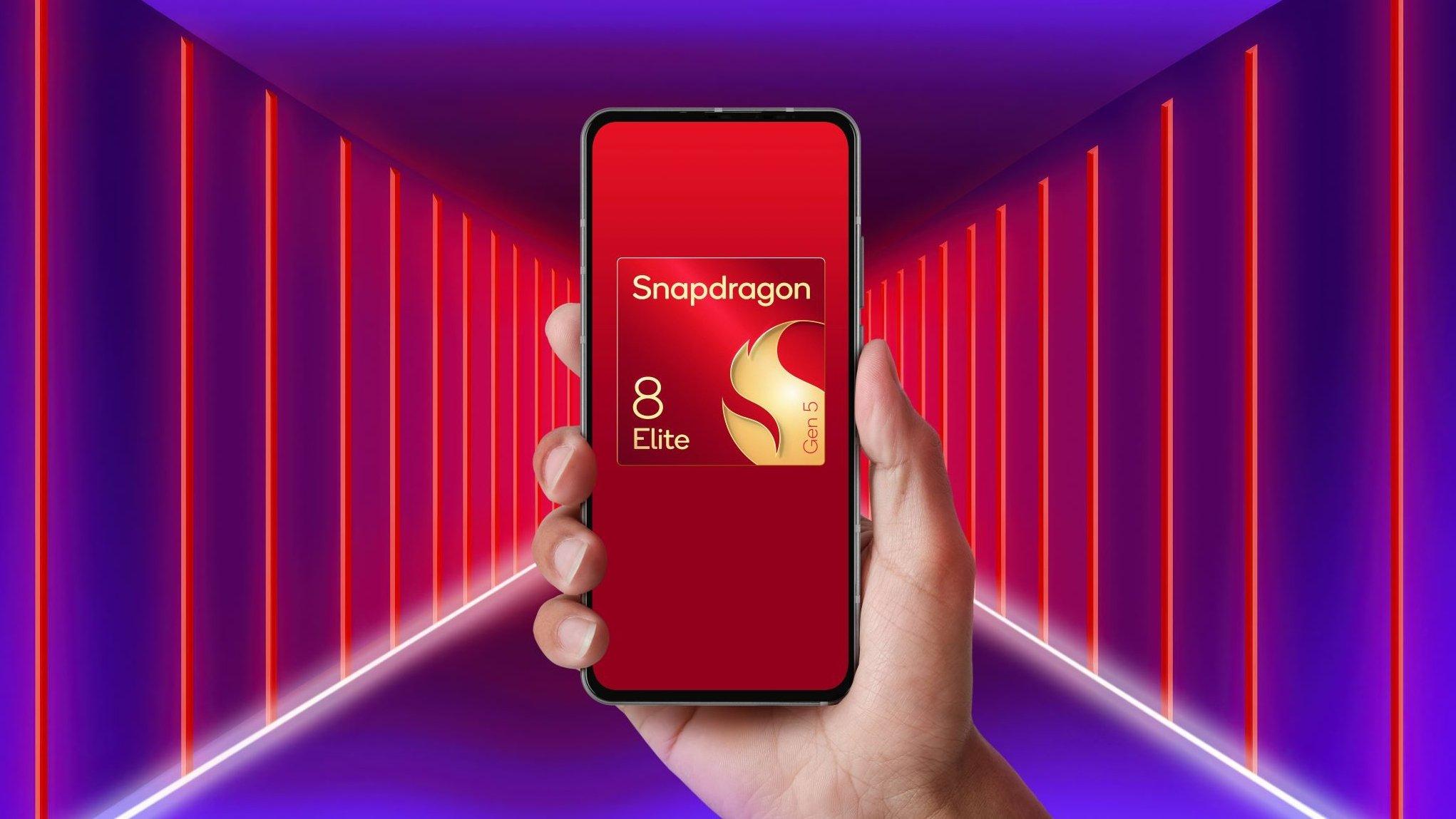- Oryon CPU at 4,6 GHz with 2+6 design, faster and more efficient than the previous generation
- Adreno GPU with 23% more performance and 20% less consumption, hardware ray tracing
- Hexagon NPU 37% faster for on-device AI and new proactive agents
- X85 5G connectivity, WiFi 7 FastConnect 7900, Bluetooth 6.0 and APV video support

If you choose a high-end mobile phone, what most determines how it performs is the processor. With the Snapdragon 8 Elite Gen 5, Qualcomm aims to set the pace in sustained performance, gaming experience and artificial intelligence that runs on the phone itself, all without increasing consumption.
The name makes it clear: ““Gen 5” identifies the fifth iteration of the current 8 series and “Elite” is the label for its top-of-the-line model.The focus is on a revamped Oryon CPU, a more capable Adreno GPU, and an NPU that accelerates AI processes, all with the goal of distinguishing the upcoming flagships from the rest of the Android market.
Snapdragon 8 Elite Gen 5 Specs Sheet

El new SoC is born in the process of 3 nm and brings together fundamental improvements in virtually all key areas: CPU, GPU, AI, imaging, video, and connectivity. Broadly speaking, these are its key technical features.
- Oryon CPU (3rd gen): 8 cores in 2+6 configuration; up to 4,6 GHz (Prime) y 3,62 GHz (Performance); SVE2 and SME1 support.
- GPU Adreno: +23% performance and -20% consumption compared to the previous one; hardware ray tracing; optimizations for Unreal Engine 5; Adreno HPM (18 MB) and Tile Memory Heap.
- IA: Hexagon NPU a 37% faster; Qualcomm AI Engine; Sensing Hub with dual micro NPU for always-on features.
- Cameras: triple 20-bit Spectra ISP; photos of up to 320 MP; video 8K HDR up to 60 fps; 4K at 120fps; Computational HDR.
- Connectivity: modem Snapdragon X85 5G (up to 12,5 Gbps down/3,7 Gbps up); WiFi 7 FastConnect 7900 (up to 5,8 Gbps); Bluetooth 6.0; UWB.
- Screens: Internal up to 4K/120 Hz or QHD+/240 Hz; external up to 8K/30 Hz or 4K/120 Hz.
- Memory and storage: LPDDR5X up to 5.300 MHz (up to 24 GB); UFS 4.1; USB 3.1 Gen 2.
Performance and efficiency: 3rd generation Oryon CPU

The key to the jump is in the Third generation Oryon, designed to boost power peaks and sustain them with less thermal wear. Qualcomm talks about up to 20% more performance in one thread and about 17% in multi-core loads compared to the previous model, in addition to an efficiency improvement that reaches 35% in CPU.
The cluster of 2 Prime cores (4,6 GHz) and 6 high-performance cores (3,62 GHz) eliminates the need for low-power cores and maintains fluidity through dynamic voltage and frequency management. In practice, this should result in faster multitasking and fewer prolonged performance drops.
In tests performed on reference prototypes, the chip has registered in Geekbench 3.807 points in single-core and 12.289 in multi-coreThese are preliminary figures and subject to change in the final models, but they give an idea of the terrain in which this SoC wants to play.
Beyond the numbers, Qualcomm's approach is based on a balance between power and consumption: overall energy savings of 16% in the SoC, with the focus on sustaining long gaming, video or editing sessions without penalizing autonomy.
Graphics and gameplay: new Adreno and gaming technologies
The Adreno GPU also raises the bar with a 23% more performance compared to the previous generation and 20% less consumption. Among its advantages, the hardware accelerated ray tracing in real time, optimizations for Unreal Engine 5 (Lumen, Nanite) and the Snapdragon Elite Gaming suite with VRS and Game Super Resolution 2.0.
Incorporation Adreno High Performance Memory (18 MB) and Tile Memory Heap reduces access to external memory and mitigates bottlenecks, which helps maintain more stable frame rates in demanding titles.
In benchmark scenarios, improvements in sustained stability compared to previous generations and a drop in latency have been seen when combined with system network optimizations. The idea is not just to "go faster," but maintain speed for longer.
For those who look at figures, in AnTuTu 11 have been reported in the laboratory around 4,32 million points, a fact that, as always, It will have to be validated when the first commercial mobiles arrive..
On-Device AI: Hexagon NPU and Proactive Agents

The other big leg of the chip is the artificial intelligence in the phone itself. Hexagon NPU is 37% faster and works hand in hand with the Sensing Hub to enable always-on features with minimal power consumption.
Qualcomm talks about “agentic AI"Assistants that can learn from habits and context and act proactively without relying on the cloud. This brings practical benefits: More immediate responses, greater privacy and less latency in tasks such as translation, editing or image classification.
The software ecosystem (Qualcomm AI Stack) supports multiple precisions and model encryption, opening the door to Local LLM and Computer VisionIn internal AI tests, the SoC scores over 900.000 points in AITuTu LLM, an indicator of the leap compared to the previous generation.
In addition, the Sensing Hub with dual micro NPU offloads voice, sensor and camera “always-sensing” tasks, allowing contextual actions without activating the main computing blocks.
Photo and video: ISP Spectra and the debut of the APV codec
The 20-bit Spectra Triple ISP maintains the commitment to computational photography with real-time semantic segmentation, improved Night Vision and a superior dynamic range. The technical ceiling rises to 320 MP in photos and video 8K HDR up to 60 fps, plus 4K at 120 fps and slow motion at 1080p/480 fps.
The big news is the support of the Advanced Professional Video (APV) codec, which brings professional editing workflows to mobile devices with greater flexibility in color and exposure. In audio, Snapdragon Sound, aptX Lossless and Audio Sense help capture and reproduce with less noise and more detail.
Integration with the NPU allows for the application of Contextual adjustments to focus, skin tones, and sky in real time. As always, whether manufacturers take advantage of the chip ceiling will depend on their sensors, optics, and software tuning.
For creators, support from 10-bit HEIF, Google's Ultra HDR, and AI noise reduction improvements in 4K facilitate cleaner, more consistent editing paths.
Connectivity, displays and availability

The networks section is supported by the Snapdragon X85 5G modem with Release 18: up to 12,5 Gbps download and 3,7 Gbps upload, AI-assisted beam management and dynamic traffic prioritization for gaming and video calls.
In local connectivity, the system FastConnect 7900 enables WiFi 7 with peak speeds of 5,8 Gbps y consumption cuts of up to 40%, plus Bluetooth 6.0 and UWB for new location experiences and accessories. On displays, internal support for 4K at 120 Hz or QHD+ at 240 Hz, and external output up to 8K at 30 Hz.
In memory, compatibility with 5 MHz LPDDR5.300X (up to 24GB) and UFS 4.1 storage. The platform maintains USB 3.1 Gen 2 and a full suite of security and virtualization features aligned with modern Android.
The first mobile phones with this chip will arrive in the next few weeks. Launch partners include names such as Samsung, Xiaomi, OPPO, OnePlus, Sony, Honor, vivo, Nubia, realme, and RedMagic, among others. A variant without the Elite tag is expected later, the Snapdragon 8 Gen5, aimed at scaling up the offer in the high range.
And what about the Apple A19 Pro?
Early, non-conclusive measurements suggest that Apple maintains an advantage in single-core performance, while Qualcomm would take a breath in multicore and graphics powerIn prototypes, they have been seen 3.981/10.798 points (single/multi) for the A19 Pro and 3.807/12.289 for the 8 Elite Gen 5; in 3DMark Wild Life Extreme, the Qualcomm chip reached 8.428 points. They should be taken with caution: they are not yet commercial units, and software can move the needle.
Snapdragon 8 Elite Gen 5 is shaping up to be the technical basis of the next star Android, combining CPU and GPU muscle with local AI, next-generation connectivity and a multimedia package that leaves no stone unturned.
I am a technology enthusiast who has turned his "geek" interests into a profession. I have spent more than 10 years of my life using cutting-edge technology and tinkering with all kinds of programs out of pure curiosity. Now I have specialized in computer technology and video games. This is because for more than 5 years I have been writing for various websites on technology and video games, creating articles that seek to give you the information you need in a language that is understandable to everyone.
If you have any questions, my knowledge ranges from everything related to the Windows operating system as well as Android for mobile phones. And my commitment is to you, I am always willing to spend a few minutes and help you resolve any questions you may have in this internet world.